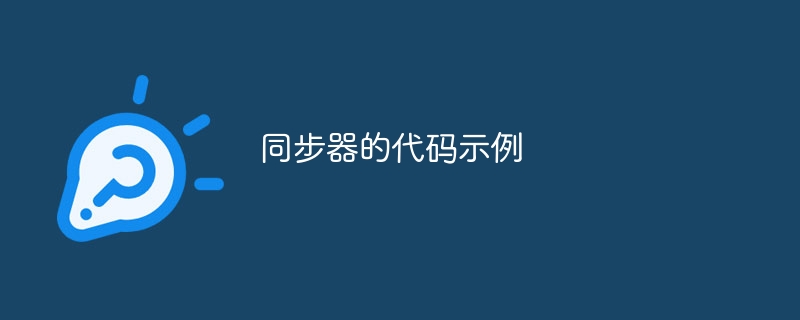同步器的代码示例
时间:2025-01-16 17:55:16 101浏览 收藏
本篇文章向大家介绍《同步器的代码示例》,主要包括,具有一定的参考价值,需要的朋友可以参考一下。

本文提供四个Java并发同步器的代码示例及使用方法,帮助您理解Java多线程编程中的同步机制。
1. CountDownLatch:一次性屏障,协调线程
CountDownLatch允许一个或多个线程等待,直到其他线程完成一组操作。
import java.util.concurrent.Phaser;
public class PhaserExample {
public static void main(String[] args) {
Phaser phaser = new Phaser(1); // 注册“主方”
for (int i = 0; i < 3; i++) {
new Thread(() -> {
System.out.println("Thread " + Thread.currentThread().getName() + " registered.");
phaser.register(); // 注册线程
try {
Thread.sleep(1000);
System.out.println("Thread " + Thread.currentThread().getName() + " arrived at phase " + phaser.getPhase());
phaser.arriveAndAwaitAdvance(); // 到达并等待其他线程
System.out.println("Thread " + Thread.currentThread().getName() + " passed phase " + phaser.getPhase());
} catch (InterruptedException e) {
e.printStackTrace();
} finally {
phaser.arriveAndDeregister(); // 完成并注销
}
}).start();
}
phaser.arriveAndAwaitAdvance(); // 主线程等待所有线程完成第一阶段
System.out.println("All threads finished.");
}
}
这些示例演示了每个同步器的基本用法。您可以修改线程数量和等待时间来观察同步行为的变化。 记住处理潜在的InterruptedException。
今天关于《同步器的代码示例》的内容就介绍到这里了,是不是学起来一目了然!想要了解更多关于的内容请关注golang学习网公众号!
相关阅读
更多>
-
501 收藏
-
501 收藏
-
501 收藏
-
501 收藏
-
501 收藏
最新阅读
更多>
-
362 收藏
-
491 收藏
-
411 收藏
-
384 收藏
-
406 收藏
-
247 收藏
-
421 收藏
-
368 收藏
-
102 收藏
-
459 收藏
-
483 收藏
-
196 收藏
课程推荐
更多>
-

- 前端进阶之JavaScript设计模式
- 设计模式是开发人员在软件开发过程中面临一般问题时的解决方案,代表了最佳的实践。本课程的主打内容包括JS常见设计模式以及具体应用场景,打造一站式知识长龙服务,适合有JS基础的同学学习。
- 立即学习 543次学习
-

- GO语言核心编程课程
- 本课程采用真实案例,全面具体可落地,从理论到实践,一步一步将GO核心编程技术、编程思想、底层实现融会贯通,使学习者贴近时代脉搏,做IT互联网时代的弄潮儿。
- 立即学习 516次学习
-

- 简单聊聊mysql8与网络通信
- 如有问题加微信:Le-studyg;在课程中,我们将首先介绍MySQL8的新特性,包括性能优化、安全增强、新数据类型等,帮助学生快速熟悉MySQL8的最新功能。接着,我们将深入解析MySQL的网络通信机制,包括协议、连接管理、数据传输等,让
- 立即学习 500次学习
-

- JavaScript正则表达式基础与实战
- 在任何一门编程语言中,正则表达式,都是一项重要的知识,它提供了高效的字符串匹配与捕获机制,可以极大的简化程序设计。
- 立即学习 487次学习
-

- 从零制作响应式网站—Grid布局
- 本系列教程将展示从零制作一个假想的网络科技公司官网,分为导航,轮播,关于我们,成功案例,服务流程,团队介绍,数据部分,公司动态,底部信息等内容区块。网站整体采用CSSGrid布局,支持响应式,有流畅过渡和展现动画。
- 立即学习 485次学习
